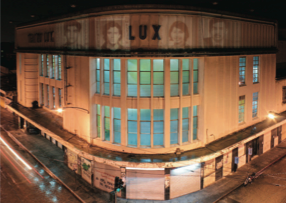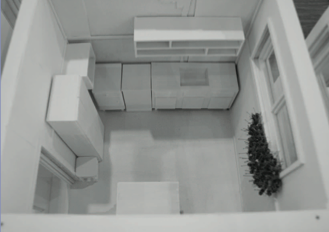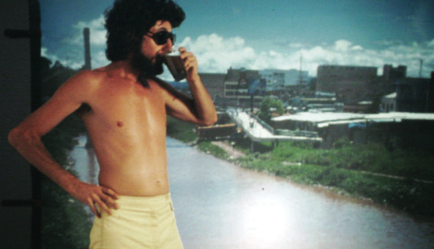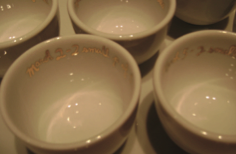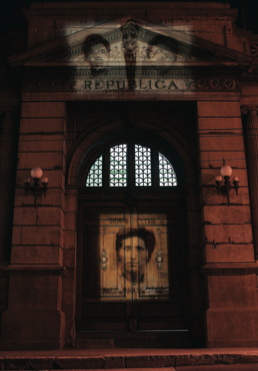BAVIC ‘08
Political Reflections, Existential Rough Tracks
The 6th edition of the Visual Arts Biennial of the Central American Isthmus, taking place from November 13, 2008 through February 20, 2009 in Tegucigalpa, Honduras, offered a heterogeneous horizon of creative freedom through the presentation of 72 works by 36 artists. The event thus completed the cycle of this cultural meeting held on a rotating basis, which had its inaugural edition ten years ago, and had already been featured in the other Spanish-speaking countries of the region (Guatemala, Nicaragua, Costa Rica, Panama and El Salvador).
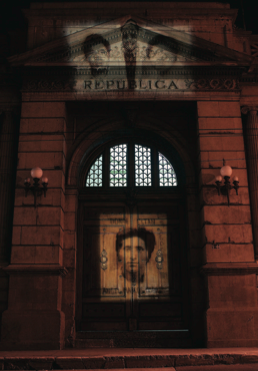
The Awards
Three of the four works distinguished by Félix Ángel, Julián Zugazagoitia and Rodolfo Kronfle constituted a clever and subtle expression of the link between art and historical and political processes (Agudelo, Riedel, Barrantes); the remaining one was a delightful introspection (Piedra).
The work awarded First Prize, A la tumba perdida de Andrés Castro, los héroes sin tumba de Nicaragua, by Marcos Agudelo (Nicaragua), resorted to the past to denounce the present and the manipulation of information and of the dead. This powerful video- installation featured a stone attached to an MP4 on which a one- minute video was projected. It showed a pair of hands burying the stone, a billboard with propaganda of Daniel Ortega’s government, and a blue sky for just a brief moment. Castro, a sergeant who became a patriotic hero for resisting, in 1856, an invasion led by a filibuster with nothing but stones, has no known grave. Existential rough tracks were glimpsed in Esteban Piedra’s (Costa Rica) work, awarded Second Prize; Estudio para la deconstrucción de una casa appeared as a metaphor for the precarious balance on which our lives and our relationships with others are based. A faithful and exceptional scale-model of the artist’s house, it included two videos. One of them was a minimal one set in the ambit of the scale-model sitting-room, and it showed the daily comings and goings of its inhabitants, including those of a spider plus its hideaway in the ceiling. Verónica Riedel’s (Guatemala) Tuk Tuk (Mototaxi blindado), awarded Third Prize, moved about; turned its lights on and off, and made noises. Riedel’s concern was not actually the threat to road safety posed by the precariousness of this vehicle, which was so real that it even showed traces of the bullets shot by the artist herself. The focus was mainly the threat posed to public safety in Guatemala by gangs, organized crime... and the police? A single Honorable Mention went to En las faldas del Virilla, a beautiful and critical digital photograph by Errol Barrantes (Costa Rica).
The Exhibition
Different generations and artistic approaches could be seen at the Museum of National Identity (MNI), where the works exhibited posed a discussion on universal issues and on all sorts of deprivations. The average age of participating artists was 30 years old, and they showed mainly installation, video, and photography. In this edition, homage was paid to Gustavo Araujo (Panama, 1965-2008), who passed away tragically.
Street walls exhibited Guillermo Maldonado’s (Guatemala) engravings and Daniel Hernández-Salazar’s (Guatemala) photographs of people who disappeared during the Civil War. Poetry and everyday objects were utilized to denounce child labor and sexual exploitation (Adán Vallecillo, Honduras), to induce reflection on superficiality and lack of communication (Wilbert Carmona, Nicaragua), to denounce the violence affecting cities (Guillermo E. Araujo, El Salvador), and to denounce development (Walterio Iraheta, El Salvador).
Couple conflicts were featured in the somber video by Sila Chanto and Jhafis Quintero (Panama), family roots entwined with a social component in Mimian Hsu Chen’s (Costa Rica) tableware and tapestry; Tegucigalpa was seen in a slideshow by Jonathan Harker (Panama) portraying him as a preacher, a politician, a football player and a cowboy. Works by the Guatemalan collective, La Torana, were exhibited out of contest, since groups are not accepted as participants.
The Biennial, sponsored by a group of businessmen from Central America (Promerica Bank, Honduras; Promerica Bank, El Salvador, Ortiz Gurdián Foundation, Nicaragua; The Paiz Foundation, Guatemala; ‘Empresarios por el Arte’, Costa Rica and the Fernández Pirla Foundation, Panama), is a generous and unique endeavor aimed at achieving regional integration in Latin America. A splendid showcase for the artistic production of the region, BAVIC ’08 provides international exposure for artists, opening a window onto knowledge and creation.

